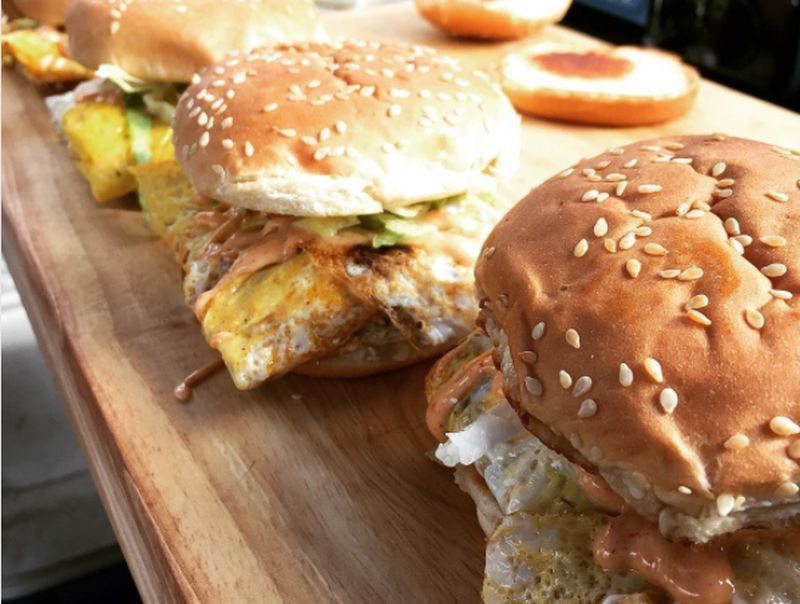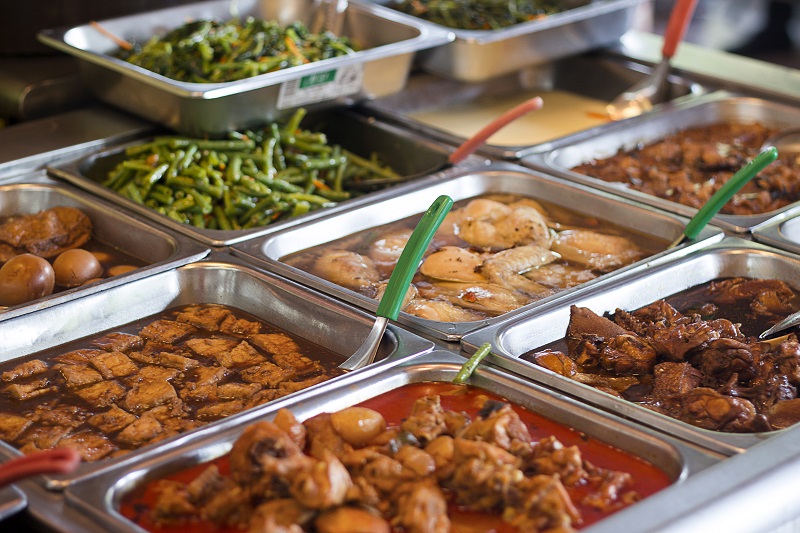KUALA LUMPUR, Aug 11 — Malaysians can be a polarising lot when it comes to socio-political issues, but food has always managed to unite us, especially when the dishes make it into those most recommended lists.
We take pride in traditional recipes that are handed down through the generations as well as adopting food influences from other cultures — even our conversation openers are food related.
As we head towards the height of Merdeka celebrations, Malay Mail looks at some of the dishes that define the Malaysian identity.
Nasi lemak
You can wolf this down any time of the day. Traditionally wrapped in banana leaf, the decadent coconut milk-infused rice is eaten with sambal, fried ikan bilis, hard-boiled egg, roasted peanuts and slices of cucumber. Not one sambal tastes the same as everyone has their own fiery recipe.
You can also add on rendang chicken, not the crispy kind, or beef, seafood, vegetables and so on. This definitive dish is also modernise in the form of burgers, ice-creams, sushi, sandwiches, cakes and a cocktail. Last year, we even dressed our Miss Malaysia in a nasi lemak inspired outfit.
Remember to finish the nasi lemak off with a steaming, frothy cup of teh tarik.

Satay
Grilling meat on sticks or skewers isn’t an original idea. People across the world have done so, in different variations. Our unique version was ranked 14th in CNNGo’s list of “world’s 50 best food” in 2011. Marinated meats such as chicken, beef and lamb are grilled over open fire to achieve that charred flavour while the cook periodically slathers over the marinade to keep the meat juicy.
Some places even prepare satay with rabbit, ostrich, deer, fish or pork.
It is usually served with cubes of cucumber, raw onions and nasi impit. But the best accompaniment is the peanut gravy. Fragrant, spicy and slight sweet, it is a mix of chillies, ginger, shallots, garlic and of course, peanuts.
Laksa
It is hard to put your finger down at what exactly laksa is. It differs from state to state. But generally, laksa is a bowl of comfort, especially on a rainy day. Basically, you have noodles in spicy broth with bits of vegetables, herbs and meat thrown in. Don’t forget a generous dollop of sambal (for most versions).
Arguably, the laksa that made Malaysia an international name is the Penang variety. Assam laksa has thick white rice noodles in a fish-based spicy broth and served with a handful of shredded cucumber, onions, chillies, pineapple and aromatic herbs. For this dish, you’ll need to add a spoonful of heady prawn paste.
If that’s not your bowl of noodles, there are curry laksa, laksa Johor, laksam, laksa Sarawak and so on. It would be great to have a week just wolfing down the many varieties of laksa.

Banana leaf rice
Tucking into banana leaf rice is very much a social affair. Traditionally served on banana leaf, many places have gone for leaf inspired plates, the waiter heaps enough rice to feed a small family in front of you. He will then laden over a variety of curries and tops the rice with some crispy papadom. Not forgetting an assortment of vegetables, pickles and condiments.
There are eggs, curried or deep fried meats and seafood side dishes meant for sharing. To fully enjoy the experience, it is best eaten by hand and washed down with lassi, coffee or teh tarik. After you are done, remember to fold the leaf inwards.

Ramly burger
It is quite strange when Malaysians are fonder of Ramly burgers than the fast food chain types or even gourmet ones. Nothing draws the night crowd than a roadside burger stall. The signature patties from the Ramly brand are cooked on a flat top grill and doused with black pepper, Worcestershire sauce and some secret concoction.
If you make it a special, you will have the patty in an omelette pocket. Slices of tomatoes, cucumber and lettuce are a given as well as a liberal squeeze of chilli sauce and mayonnaise. Messy, greasy but delicious, that pretty much sums it up.

Rice and dishes
Seeing that rice is a staple here, there are many ways to enjoy it. You have nasi dagang, nasi kandar, nasi padang, Chinese economy rice and so on. Get a plate of rice and start piling on whatever side dish you like. Each variation has some regional dishes as well as the usual suspects (hello fried chicken).
You can opt to get it from roadside stalls, shops and even upscale hotels. It is the fastest way to sample several dishes while keeping to the one-hour lunch break. It is also a convenient way for busy families to eat as there is bound to be a dish for everyone.

Cendol and ice kacang
After all that rich food, it is a must to have some desserts. There is nothing more quintessential than some cendol or ice kacang. Cendol is a refreshing dessert with crushed ice, red beans, cincau, corn and topped with gula Melaka or brown sugar.
Meanwhile, ice kacang has more crunchy bits with evaporated milk, coconut milk, syrup and sometimes topped with ice-cream, fruits or durian. There are many iterations but the traditional versions are still by far most popular.

Worthy mentions
Tempoyak
If you cannot stomach fresh durian, you might want to stay away from tempoyak. Tempoyak is fermented durian. The flesh of the fruit is mixed with salt and left for a few days. The recipe varies with the type of durian and taste. It is typically cooked with gulai paste and patin fish. The end product is sour, pungent, spicy and decadent.
Budu and cencaluk
Another two items on the fermented food list is budu and cencaluk. Budu is a popular fish sauce made from fermented anchovies. It originates from Kelantan and often used as a dip for fish, rice and raw vegetables.
Cencaluk is a salty condiment made from krill. Apart from being used as a dip, it is added to make sambal. It is also used as a seasoning for omelette, meats and vegetables.

Petai sambal belacan
Petai or bitter bean truly lives up to its name. However, that does not put off Malaysians who cook the beans with sambal mix and ikan bilis. For an upscale version, you can add in prawn and squid. The dish is best eaten with rice. But do your colleagues a favour, don’t have it for lunch.
Sago worms
A delicacy in East Malaysia, sago worms (locally known as butod) are eaten at the larval stage. The worms earned their name as they are commonly found feeding on the starchy pith of the sago palm. They can be steamed, sautéed or roasted and added to rice. It is said to have a creamy texture with a nutty taste. Some even eat them while they are alive.
Did you know?
According to FriedChillies.com, Tun Dr Mahathir Mohamad’s favourite dish is daging bakar cecah air asam (grilled buffalo meat with tamarind sauce). The meat is sliced into medium sized chunks and marinated with salt and turmeric powder, then left of the grill. The dip that goes with it is a mixture of tamarind water, chillies and onions.























